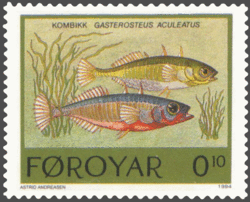Tag Archives: sticklebacks
Fish Evolve Super Fast! Only 3 Years to Adapt to Colder Temperatures
Researchers with the University of British Columbia have witnessed one of the most rapid evolutionary cycles ever recorded amongst populations in the wild. It took just 3 short years, for the stickleback fish to develop a tolerance for frigid waters. The waters they have grown accustomed to are about 2.5 degrees Celsius lower than those that their ancestors had to endure.
The study was recently published in the current issue of the Proceedings of the Royal Society B, and gives is some of the first concrete evidence that evolution could help populations survive the effects of global warming.
The stickleback fish originated in the oceans, however they started to make their homes in freshwater lakes and streams just after the last ice age. For the past 10,000 some odd years, both marine and freshwater sticklebacks have evolved varying physical and behavioral pattersn, making them a perfect fit to the models for Darwin’s natural selection theory.
“By testing the temperature tolerance of wild and lab-raised sticklebacks, we were able to determine that freshwater sticklebacks can tolerate lower temperatures than their marine counterparts,” explained Rowan Barrett, the lead author who hails from the UBC Department of Zoology. “This made sense from an evolutionary perspective because their ancestors were able to adapt to freshwater lakes, which typically reach colder temperatures than the ocean.”
To figure out just how quickly this adaptation happened, Barrett, along with collegues from Switzerland and Sweden, “recreated history” by taking marine sticklebacks to freshwater ponds and they discovered that in as little as 3 years, they were remarkably able to tolerate the same minimum water temperature as the freshwater sticklebacks, 2.5 degrees Celsius less that their ancestors!
Critics har been raised that this is an example of mere adaptation not evolution.
